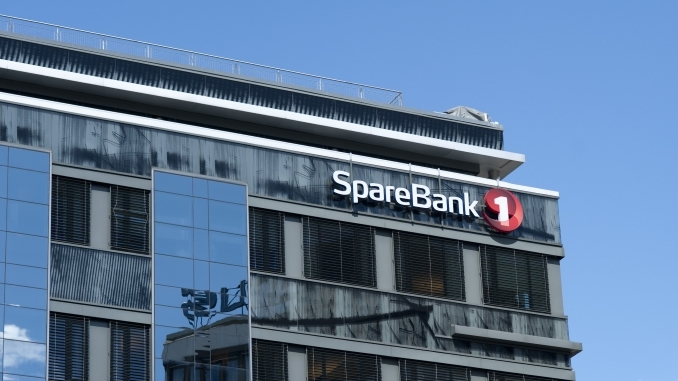
SpareBank 1 Bolgikreditt launched the largest single-tranche green bank bond outside China and the first green benchmark covered bond with residential mortgages on Tuesday, a EUR1bn deal made possible by taking building codes and years as a proxy for energy efficiency – a strategy that could be used by others.
The only three green covered bond benchmarks issued so far – two by Berlin Hyp and one by Deutsche Hypo – were backed by commercial real estate, and were for EUR500m apiece. Only two other issuers in any asset class have issued large public green bonds where the use of proceeds is solely residential mortgage loans – Obvion in the Netherlands for its Green Storm RMBS and Barclays in the UK for unsecured issuance.
Market participants have said that a key obstacle to issuing green bonds where the use of proceeds is earmarked for residential mortgage lending – whether covered, RMBS or unsecured – is the availability of data on the energy efficiency of underlying properties, with lenders not yet holding sufficient information in their systems and/or with energy performance certificate (EPC) data in many cases not accessible. In Norway government agency Enova holds data on residential properties’ energy efficiency, but banks do not have access to this information due to privacy legislation.
Efforts to change this are underway, but to overcome the hurdle SpareBank 1 Boligkreditt, green bond adviser ING and Norwegian engineering consultancy Multiconsult came up with a solution whereby assets are selected on the basis of their year of construction, with recent building codes ensuring that new buildings are among the most energy efficient.
“We’ve just established a proxy to defining the most energy efficient buildings, which is the newest buildings,” Eivind Hegelstad, COO and head of investor relations (pictured below), told Sustainabonds. “Then it was just a matter of finding when is the cut-off point for when the newest and very tight building code kicked in. The regulation put on the books in 2007 represented a significant tightening in terms of how you build houses and how you insulate them, and therefore what the energy demands of a modern house is in Norway.
 “This proxy allowed us a shortcut around the certificates. We will then use the certificates when they become available to perhaps add on a few percentage points to the universe of available properties that we could use.”
“This proxy allowed us a shortcut around the certificates. We will then use the certificates when they become available to perhaps add on a few percentage points to the universe of available properties that we could use.”
SpaBol’s green bond framework also allows for asset selection based on EPCs and renovations improving energy efficiency by at least 30%, but the initial asset pool comprises properties built from 2009 onwards, which will have met building standards set from 2007 onwards. Houses completed as of 2009 constitute approximately 8% of the total housing stock in Norway, meaning that the asset selection complies with Climate Bonds Initiative (CBI) standards requiring residential buildings to be among the 15% most energy efficient for certification, according to Multiconsult, which is a CBI-approved verifier. Around NOK21.25bn (EUR2.21bn) of SpaBol’s mortgage pool is from 2009 onwards.
DNV-GL provided a second party opinion, confirming that the framework complies with the Green Bond Principles, while CBI certification is underway. SpaBol will report on estimated energy consumption and savings, and CO2 emissions avoided.
The asset selection methodology allowed the issuer and its counterparties to prepare and execute the transaction rapidly, with the green light only being given by SpareBank 1 Boligkreditt in early December, even if initial discussions had taken place many months beforehand.
“For almost all green bond issuance, I advise issuers to use existing standards, such as EPC standards and countries’ building codes – which was the case here,” said Hans Biemans, head of sustainable markets at ING. “It is the easiest and also the most reliable way for the issuers to start these processes: it’s not always necessary to have the data in the lending systems; if you just have external data, you can match it up – with the help of a specialist – and that also works fine.”
Lead managers Deutsche, ING, Natixis and UniCredit launched the seven year transaction on Tuesday morning with initial price thoughts of the mid-swaps minus 3bp area. They ultimately priced it at minus 6bp, following revised guidance of the minus 5bp area, with a book of over EUR1.7bn.
The EUR1bn size is the biggest for a green bond from a bank outside China, with other non-Chinese supply of a similar or greater magnitude having been either multi-tranche or not purely green but having broader sustainability use of proceeds.
Bankers away from the leads said the size of the order book compared favourably to recent comparable benchmark covered bond supply, while the new issue premium was put at 2bp-3bp.
“We saw a bigger order book than we normally would have seen,” said Hegelstad, “but no pricing concession for the greenness of the bond, which is what we expected. My best estimate is that we had EUR400m of additional demand, so the order book may have been EUR1.3bn rather than EUR1.7bn.
“We probably could have priced 1bp tighter,” he added, “but we wanted to be investor-friendly and not deviate too far from the guidance and risk being seen as too aggressive in the market – there have been some comments lately about slightly aggressive issues and we don’t want to belong to that category. It’s worth noting because at minus 7bp you could have perhaps argued that there was 1bp for the greenness.”
Vincent de Vries, director, FIG DCM at ING, suggested that a 1bp-2bp tightening in the aftermarket was also helped by the green nature of the bond and its impact on demand. Overall, some 60% of the order book was deemed to comprise “green” investors.
“The first order in the book was green, so we were off to a good start,” said de Vries. “It also definitely contributed to the pace with which the book developed.
“And I think it’s fair to say we saw some orders in the book that you would not normally see in a euro-denominated covered bond. So the fact that it was green gave it a unique element that made it of interest to a number of accounts.”
Among these were official institutions with green bond mandates, UN PRI signatories, and investors signed up to IIGCC (Institutional Investors Group on Climate Change) statements and letters, according to Biemans. He noted that some investors typically involved in covered bonds put in larger orders than usual, boosted by pockets of additional green demand within the institutions.
“We think the entire organisation is increasingly aware of sustainability, hence this sort of moved the needle for them,” he said. “So, for example, an investor who may look at covered bonds in general but has not been that active in the last months or years, even, but came into the market for this transaction.”
The 60% share of green investors was further broken down as 23% “dark green”, 12% “medium green” and 25% “light green.
Hegelstad expects the template set by SpaBol to be taken up by other Norwegian lenders, while de Vries said similar practices can be adopted elsewhere.
“Residential mortgages are probably perceived as the most complicated asset class to use because of the relatively small individual loan sizes, but it doesn’t have to be that complicated,” said de Vries.
“We have substantially lowered the hurdle for all other Norwegian banks. And for green bond purposes this could be a very nice add-on for existing green bond issuers elsewhere, and opens up a lot of potential for many other banks to consider doing it. We, at least, are encountering a lot of interest from financial institutions.”



